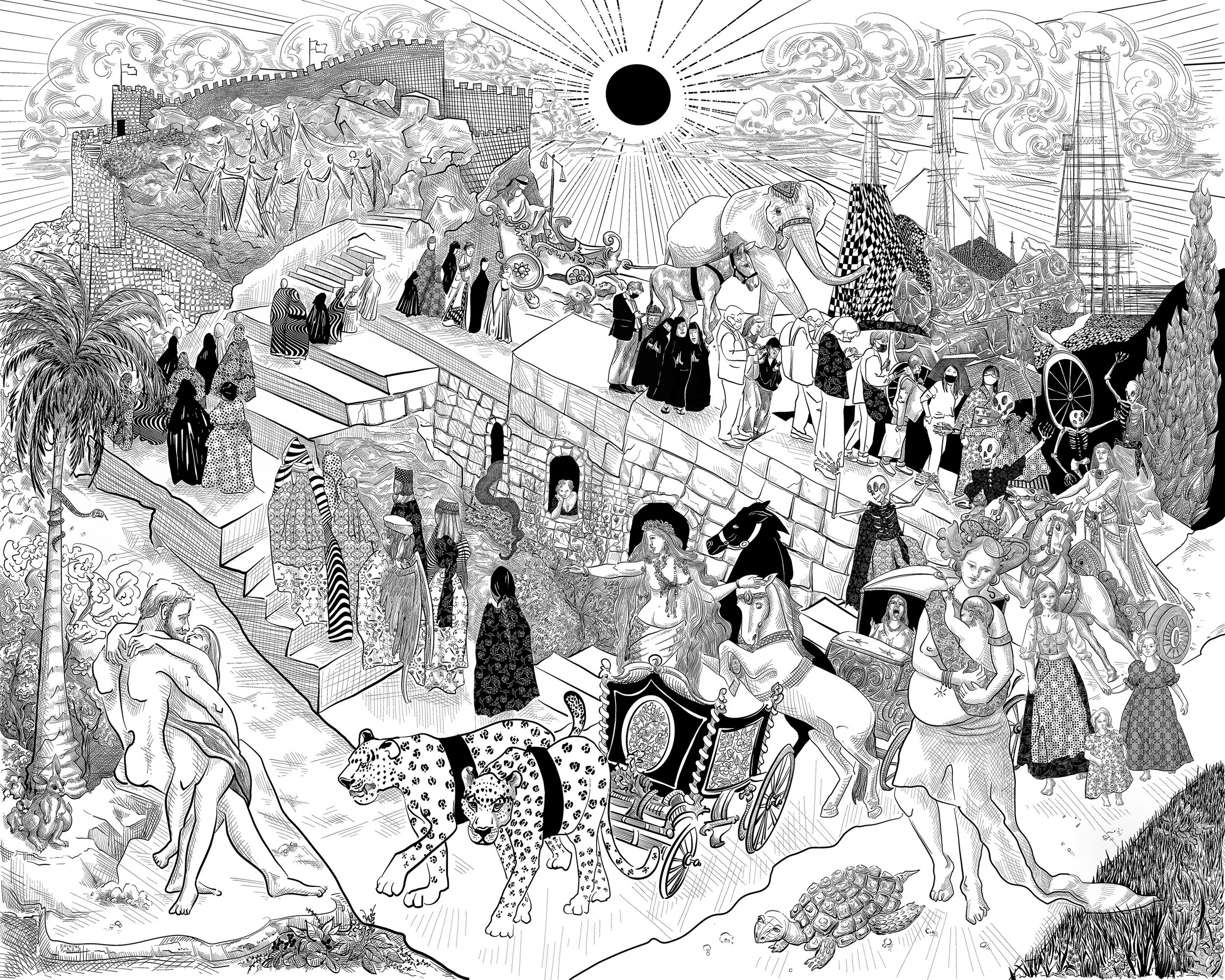A Commons in Chains: Art in the Age of Permission
Wheel of Fortune, 2023
Copyright began as a promise—a brief monopoly granted to creators in exchange for enriching the public domain. The first modern copyright law, England’s Statute of Anne in 1710, gave authors 14 years of protection, renewable once. Its purpose wasn’t to create dynasties or entrench cultural property, but to reward originality and then return those creations to the people.
Over time, that promise curdled. What began as a short-term incentive has become a system of near-permanent control. Today, copyright protections stretch well beyond reason: life + 70 years for individuals, 95 years for corporations, and a thicket of retroactive extensions, exemptions, and legal ambiguity. Fair use—the safety valve meant to protect education, criticism, and creative transformation—has grown narrow, obscure, and increasingly risky to navigate.
And here’s the paradox: just as the digital age opened vast new avenues for sharing, remixing, and cultural dialogue, the very same technologies have been used to fortify these restrictions. Algorithms flag fair use, takedown bots remove educational content, and automated copyright enforcement has chilled participation in exactly the spaces where culture should be flourishing. Instead of a renaissance of shared creativity, we’re watching the construction of a digital fence around the imagination.
I often think less about who uses copyright and more about who doesn’t. How many artists, writers, filmmakers, or students have chosen silence over uncertainty? Never uploading a remix. Never publishing a fan fiction. Never recording a cover. Not because they were infringing—but because they weren’t sure if they could. I’ve been that person. I’ve watched my peers hesitate, delete, or never begin. This is not what a culture of flourishing looks like. This is what a culture of copyright chilling looks like.
And this chill doesn’t touch everyone equally. Teenagers have been sued for downloading songs. Small artists have lost their accounts to algorithmic takedowns. Educators and documentarians have been forced to leave material out of their work, even when it was transformative, educational, or necessary. Meanwhile, major platforms—YouTube, Pinterest, Google—profit off storing copyrighted content while shielding themselves with safe harbor protections. The rules don’t apply the same to the powerful.
At the same time, copyright enforcement primarily benefits those already holding the keys: conglomerates, estates, media libraries. Disney. Universal. Warner. The estate of Tolkien. The mechanisms of protection are rarely available to working artists unless they can afford to litigate—or are lucky enough to be picked up by a nonprofit legal team.
Now, artificial intelligence and large language models challenge the very foundations of copyright itself. These systems are trained on oceans of human work—images, texts, songs—much of it copyrighted, most of it uncredited. And yet the outcomes feel familiar. Those with the resources to defend their rights may be compensated. Everyone else becomes part of the dataset.
What if it didn’t have to be this way? Imagine a copyright system modeled more like patent law: a twenty-year term, protection only for literal reproductions in the same medium. After that, art, characters, and ideas would return—like heirlooms—to the cultural commons. Filmmakers could adapt. Students could sample. New artists could build freely on what came before.
Of course, copyright has helped some creators. Writers like J.K. Rowling or musicians like Taylor Swift have earned control over their work. But much of their power also comes from trademarks and brand equity—not just copyright per se. And they are the exception. The real long-term financial beneficiaries are the rights-holders, not the makers: record labels, publishers, and estates who sit atop royalties like squatting landlords.
If we updated copyright—shortened it, clarified it, focused on mechanical reproduction—we wouldn’t be erasing protection. We’d be reclaiming balance. Artists would still earn, but from new work, performances, commissions, and participation—not from locking up the past. Culture would move in open conversation. We’d rely less on ownership, and more on relationship.
Culture is a conversation, messy, repeated, passed around, reworked, sung slightly off-key, or drawn from memory. It’s alive and it belongs to us. And I believe we can build a system that honors the people who make it without stunting the conversation..
This isn’t a call to abandon protection—it’s a call to remember why protection existed in the first place. Copyright should serve artists and the public, not just rights-holders and platforms. Let’s design a system that nurtures creativity, not fences it in. I’m not asking for a world without protection. I’m asking for a world where protection doesn’t come at the cost of possibility. It’s time to unlock the commons.

